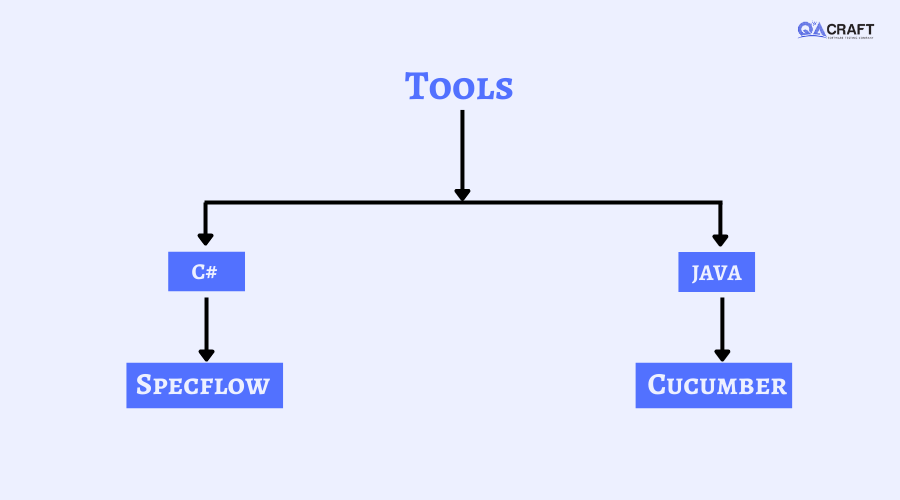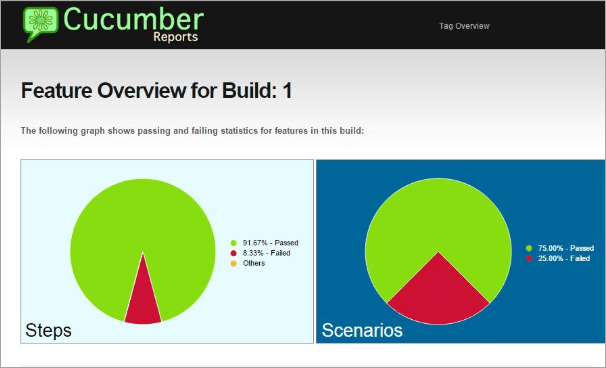30 Sep

What is BDD?
BDD stands for Behavior Driven Development, it is a branch of principles defined by Test Driven Development. In Test Driven Development, we build the thing right. While in Behavior Driven Development, we ensure that we build the right thing. Basically, Behavior Driven Development is an extension of TDD.
A BDD testing framework includes the uses of Cucumber and SpecFlow, which have enabled non-technical product owners to define application behavior as human-readable text.
In Behavior Driven testing, we write tests first and then add application code. In BDD Tests are written in plain descriptive English type grammar, Tests are explained as a behavior of an application and are more user-focused and it Using examples to clarify requirements.
Why Use BDD Framework?
Before the BDD framework arrived in the industry, companies were using TDD. TDD works fine in software development, provided the stakeholders are familiar with the framework being used and their technical knowledge is adequate.

BDD is a way that acts as a bridge to overcome the gap between the technical and the non-technical teams because the test cases were written in simple text, which is easy to understand for everyone i.e., English. The main advantage of BDD is the low grumble and clear approach which is easier to understand.
How to Implement the BDD Approach?
Test scenarios should be written in simple plain English language with an overall description of the test, which includes how to test the application and the behavior of the application which can be understandable by all.
In this tutorial, we mainly focus on Cucumber – a software testing tool for BDD, and will learn to practically implement it using its language i.e., Gherkin.

Cucumber – A BDD Framework Tool
Cucumber is a software testing tool that is used in Behavior Driven Development (BDD) framework to write test cases.

Given – When – Then Approach
- Given: Preconditions.
- When: Actions.
- Then: outcome.
Given User is navigating to Any Ecommerce Website Login Page.
When the User enters credential Username as “email” and password as “Password123”
Then User successfully log in to their Amazon Account.
Sample Step Definition File
import cucumber.api.java.en.Given;
import cucumber.api.java.en.Then;
import cucumber.api.java.en.When;
public class Sample {
[Given(@" User is navigating to Any Ecommerce Website Login Page ")]
public void GivenUserIsNavigatingToAnyEcommerceWebsiteLoginPage()
{
//write code here
}
[When(@" User enter credential Username as ""([^""]*)"" and password as ""([^""]*)""")]
public void WhenUserEnterCredentialUsernameAsAndPasswordAs(string username, string password)
{
//write code here
}
[Then(@" User successfully Login to Amazon Account")]
public void ThenUserSuccessfullyLoginToAmazonAccount()
{
//write code her
}
}
Advantages of BDD Framework
Advantages of the BDD Framework are as follows:
1) Coverage of User Stories: Hybrid Framework with Behavior Driven Development is meant to be combined with different features. Due to its easy feature of layman text in the form of feature file allows the stakeholders of technical resources to write the scenarios in Gherkin language using the user stories. The Concordance of the plain text helps to gain maximum coverage on testing.
2) Clarity of Scenarios: Gherkin language uses plain layman text which focuses on the outcome of the product which is being tested using BDD.
As a feature file distinct from the technical description in a different step definitions file for the testers, it simply helps a non-technical person to perceive the automated test easily.
The readability power of Gherkin surety the clarity of scenarios to each of its users which in turn helps in building the right product.
3) Automation of Test Scenarios: Cucumber implementation in a BDD framework allows an automation tester to easily begin the scripting with the right perspective. The easy language of cucumber scenarios helps them to perceive the functionality in a better way.
Cucumber is a language-independent plugin that is compatible with many programming languages E.g., Java, Python, etc.
4) Code Reuse in Framework: Given – When – Then approach gives originality to the testers to use the same steps as many times as the user wants in the feature file which successively helps in saving time for the automation testers.
Example:
Scenario 1:Given User is navigated to google.com When the User searched “webdriver” in the search engine Then Clicked on the Search Button And User can see search results related to webdriverScenario 2:
Given User is navigated to google.com When the User searched “Remote webdriver” in the search engine Then Clicked on the Search Button And User can see search results related to Remote webdriver
In the above two scenarios, we can use “Given”, “When” and “Then” steps reusable in the second scenario.
5) Parameterization in Feature File: In BDD user should use the concept of parameterization in the gherkins steps to obtain reusability in the file.
For Example, if a user is working on a bank application where he has to log in to the application again and again. In a such situation, such kind of steps could be parameterized with a different set of data and which saves time for the tester.
While writing all the test scenarios, we have to define the feature steps file in such a way, so that common functionality can be easily accessible in one place.
6) Continuous Integration: Easy to Integrate: Cucumber also supports working with Jenkins. We can run the cucumber test execution in Jenkins and also can implement the same in Jenkins slave machines. The cucumber reporting plugin also provides users with a comprehensive view of tracing test scenarios.

Conclusion:
BDD is a very beautiful concept in agile methodology. It always starts either your development or testing using Behavior Driven Development, as using it gives you a platform to work independently with various technologies.
Cucumber is one of the best tools which helps implement the BDD approach in the software project. This allows us to work with different technologies like Java, Python, etc.
Cucumber is being widely used by many companies and freelancers, it also has many communities where people can share their issues and can easily find solutions to their problems.
Read Also:
1) Best Automation Testing Tools 2) 15 Best Bug Tracking Tools 3) Top 11 API Testing ToolsDeepali works as a Software Development Engineer in Test, at QACraft, she is a computer science engineer with a degree of bachelor and has 3+Years of experience in the software industry as a Manual Tester and Automation Test Engineer. In her free time, she loves reading and podcasts.
Related Post
Categories
- Agile Testing
- Alpha Testing
- Android App Testing
- API Testing
- Automation Testing
- Banking Domain Testing
- Beta Testing
- cloud testing
- Corporate Life
- cross browser testing
- Cypress Testing
- desktop testing
- Difference
- Domain Testing
- E-commerce Website Testing
- E-learning App Testing
- End-To-End Testing
- Functional Testing
- Game Testing
- Healthcare Domain Testing
- Integration Testing
- Interview Questions
- ios App Testing
- Jenkins
- JIRA
- Katalon
- Manual Testing
- Mobile App Testing
- Monkey Testing
- Non-Functional testing
- Performance Testing
- Postman
- Regression Testing
- Salesforce Testing
- Sanity Testing
- security testing
- Selenium Testing
- Smoke Testing
- Software Testing
- Static Testing
- Test Case
- Test Environments
- Test Scenario
- Test Script
- TestRigor
- Web Application Testing
© Copyright 2025 QACraft Pvt. Ltd. All rights reserved.
Contact : +91 9157786796




deepali